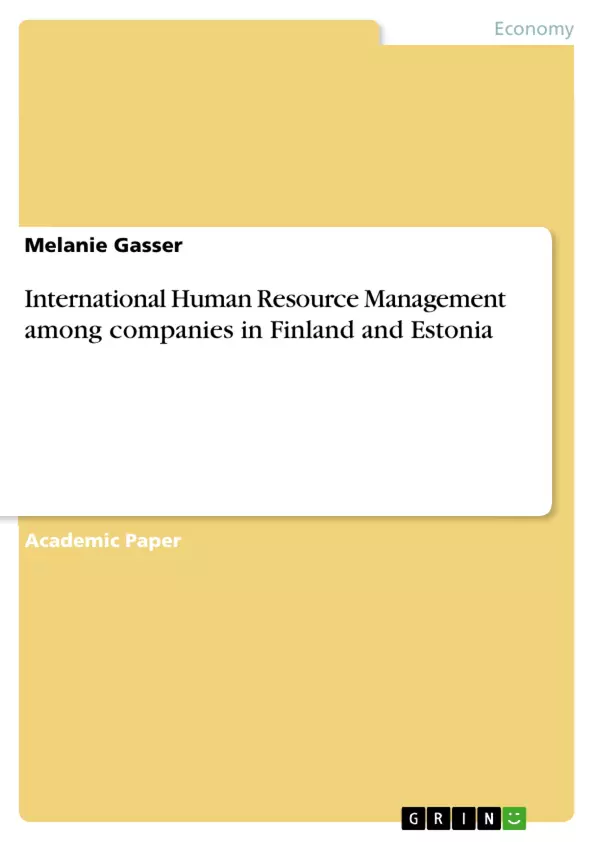In this paper nine questions concerning the article "HRM is foreign affiliates: A multiple case study among Estonian affiliates of Finnish companies" were elaborated, analyzed and interpreted. During the course International Human Resources Management, we got to know some interesting new topics. We covered numerous topics, starting with the differences between domestic HRM and IHRM, the context of international HRM, international strategies, information about expatriates and much more. In addition, a practical relevance was always established. We not only dealt with numerous interesting cases concerning the teaching content but also discussed possible examples of fellow students who were particularly suited to the respective topic area.
Inhaltsverzeichnis (Table of Contents)
- 1. Introduction
- 2. Answered questions
- 2.1 Question 1
- 2.1.1 Economical differences
- 2.1.2 National cultural differences
- 2.1.3 Political differences
- 2.1.4 Language differences
- 2.2 Question 2
- 2.3 Question 3
- 2.3.1 Company A
- 2.3.2 Company B & C
- 2.3.3 Company D
- 2.4 Question 4
- 2.4.1 Company A
- 2.4.2 Company B
- 2.4.3 Company C
- 2.4.4 Company D
- 2.5 Question 5
- 2.6 Question 6
- 2.6.1 Company A
- 2.6.2 Company B
- 2.6.3 Company C
- 2.6.4 Company D
- 2.7 Question 7
- 2.7.1 Company A
- 2.7.2 Company B
- 2.7.3 Company C
- 2.7.4 Company D
- 2.8 Question 8
- 2.9 Question 9
- 2.1 Question 1
- 3. Conclusion
- References
Zielsetzung und Themenschwerpunkte (Objectives and Key Themes)
This paper aims to analyze and interpret nine questions related to the article “HRM is foreign affiliates: A multiple case study among Estonian affiliates of Finnish companies.” The paper focuses on the differences between Finland and Estonia in terms of economic, cultural, political, and language aspects. It examines the challenges faced by Finnish companies in managing their Estonian subsidiaries, particularly in the areas of human resource management.
- Cross-cultural management in the context of Finnish and Estonian companies.
- Economic and social differences between Finland and Estonia.
- Challenges and opportunities for Finnish companies operating in Estonia.
- Human resource management practices in Estonian subsidiaries of Finnish companies.
- The impact of national culture on HRM strategies and practices.
Zusammenfassung der Kapitel (Chapter Summaries)
The paper begins with an introduction that provides context to the study and outlines the research questions. Chapter 2 focuses on answering the nine questions posed in the paper. This chapter delves into the economic, cultural, political, and language differences between Finland and Estonia. It explores the challenges faced by Finnish companies in managing their Estonian subsidiaries, examining areas such as recruitment, training, compensation, and performance management. The paper concludes with a summary of the key findings and a discussion of the implications for future research and practice.
Schlüsselwörter (Keywords)
This paper focuses on the key concepts of international human resource management, cross-cultural management, Finnish and Estonian companies, economic and cultural differences, and challenges faced by foreign subsidiaries. It delves into practical aspects of HRM practices, including recruitment, training, compensation, and performance management in the context of cross-cultural environments. The paper highlights the importance of understanding national culture and its influence on HRM strategies and practices.
- Citar trabajo
- Melanie Gasser (Autor), 2020, International Human Resource Management among companies in Finland and Estonia, Múnich, GRIN Verlag, https://www.grin.com/document/535594



